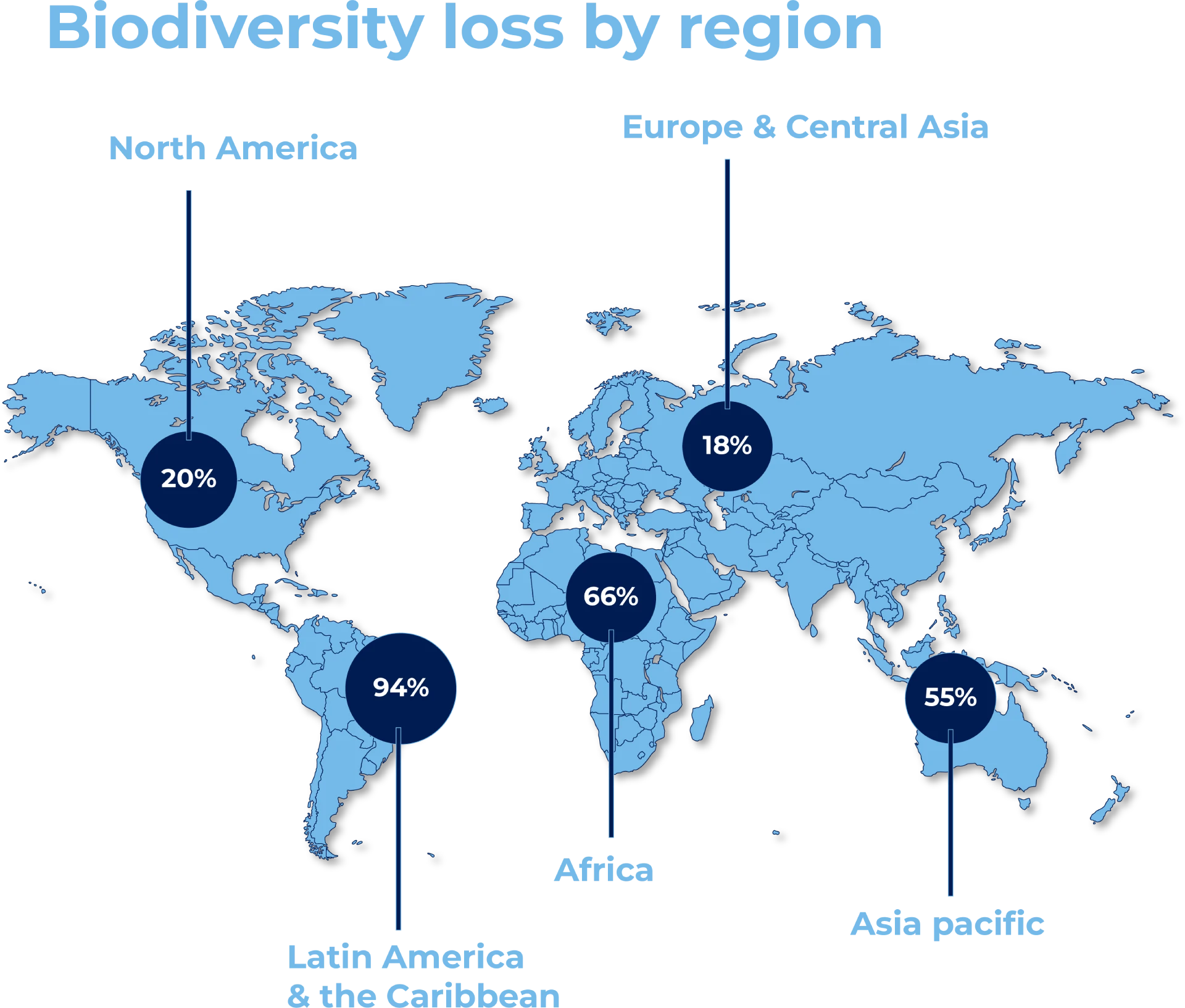Global Biodiversity Crisis: Wildlife Populations Plummeting at Alarming Rates
11-July-2023
The Living Planet Report 2022 by WWF is a comprehensive study of trends in global biodiversity and the health of the planet. It reveals that wildlife populations have declined by an average of 69% since 1970. This decline is driven by the unsustainable use of our planet’s resources, and it is having a devastating impact on the health of the planet.
The report also finds that climate change and biodiversity loss are two sides of the same coin. They are both driven by the unsustainable use of our planet’s resources, and they are both having a devastating impact on the planet. We cannot address these crises separately, and we need to take urgent action to reverse both of them. Climate change and biodiversity loss are not just environmental issues. They are also economic, development, security, social, moral, and ethical issues.
The Living Planet Index (LPI) is a measure of the health of nature. It tracks the populations of mammals, birds, fish, reptiles, and amphibians, and it has been doing so for over 50 years. The 2022 LPI found that an average of 69% of monitored wildlife populations have declined since 1970. This is a devastating decline, and it is a sign that we are losing nature at an alarming rate.
The LPI is based on data from almost 32,000 species populations. This is the most comprehensive dataset ever used to measure the health of nature, and it provides a clear picture of the decline that is taking place. The decline is being driven by a number of factors, including habitat loss, overexploitation, climate change, and pollution.

Freshwater populations have been hit the hardest by the decline in biodiversity. Since 1970, monitored freshwater populations have declined by an average of 83%, which is more than any other species group. This decline is being driven by a number of factors, including habitat loss, overexploitation, pollution, and climate change.
Habitat loss is one of the biggest threats to freshwater populations. As humans expand their footprint, they are destroying freshwater habitats, such as lakes, rivers, and wetlands. This destruction is forcing freshwater species out of their homes and making it difficult for them to survive.
Another major threat to freshwater populations is overexploitation. Humans are overfishing freshwater ecosystems, and they are also overharvesting freshwater plants and animals for food, medicine, and other products. This overexploitation is putting a strain on freshwater populations and making it difficult for them to recover.
Pollution is also a major threat to freshwater populations. Chemicals, fertilizers, and other pollutants are entering freshwater ecosystems and poisoning freshwater species. This pollution is making it difficult for freshwater species to survive and reproduce.
Climate change is another threat to freshwater populations. As the climate changes, freshwater ecosystems are becoming more stressed. This stress is making it difficult for freshwater species to survive and reproduce.

The global abundance of oceanic sharks and rays has declined by over 71% in the last 50 years. This is a staggering decline, and it is a sign that we are losing these important animals at an alarming rate. There are a number of factors that have contributed to this decline, but the most significant is overfishing. Fishing pressure on sharks and rays has increased 18-fold since 1970.

Biodiversity loss by region
North America
North America saw a downward trend in biodiversity loss from 1970 to 2000. After this time, the trend stabilized before increasing from 2014 to 2018. It is important to note that prior to the data being compiled, wildlife populations had already been affected by human activity for many decades. While it is too early to say that species numbers are significantly increasing, there have been some recent positive signs among amphibian and reptile populations.
Latin America and the Caribbean
The decline across Latin America and the Caribbean is far greater than any other region, with a 94% decrease between 1970 and 2018. Declines are seen across all the species groups studied but are most profound in freshwater fish, reptiles and amphibians.

Africa
Africa shows a consistent decreasing population trend from 1970 to 2017, with mammals and freshwater fish seeing stronger declines on average than other animal groups. Some populations, however, are defying the global trend. For example, populations of mountain gorillas in Virunga Mountains have grown to 604 individuals—up from 480 in 2010—despite years of civil unrest in the area.
Europe and Central Asia
Although Europe and Central Asia saw the smallest recorded regional decline, it should be recognized that many species were already in a depleted state when data started being compiled. While this year’s Living PIanet Index shows more positive trends among bird and mammal populations, amphibian, reptile, and freshwater fish populations are, on average, declining.
Asia Pacific
The Asia Pacific region shows a near continuous decline between 1970 and 2018, with an average decline in monitored populations of 55%. Declines across all species groups in this region were observed. In South and West Australia for example, there was a 64% reduction in Australian sea lion pup numbers between 1977 and 2019, due to hunting, capture in fishing gear or other marine debris, and disease.






